(1030 products available)









































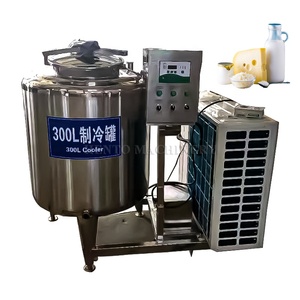
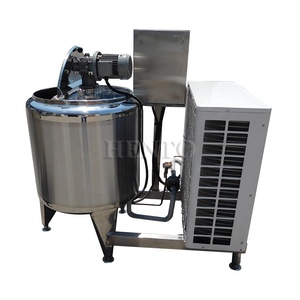











































































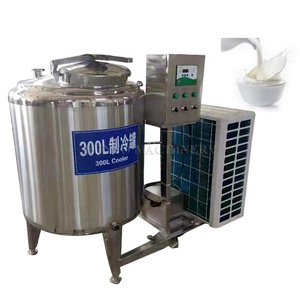
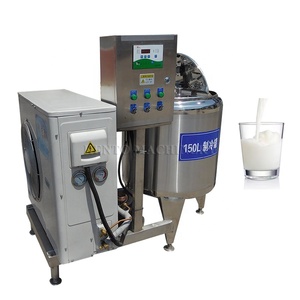

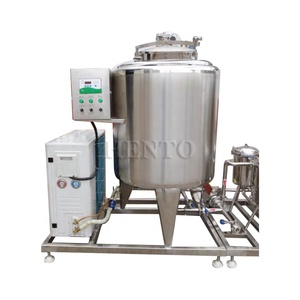
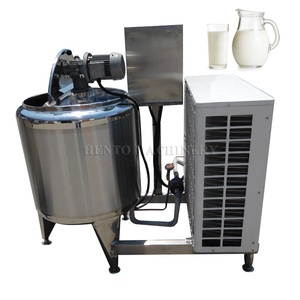
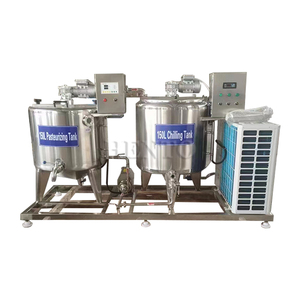












































































































A fresh milk chiller is a dairy cooling system that helps to reduce the temperature of freshly extracted milk in a short time. There are various types of fresh milk chillers, and they work based on a certain mechanism.
Specifications of fresh milk chillers vary depending on the usage needs, but a typical specification includes the following.
Like other types of refrigerators, fresh milk coolers also need maintenance because it helps ensure that the milk is chilled as per the required temperatures and prevent breakdowns. Regular maintenance helps lengthen the lifespan of the fresh milk cooler.
First, it is important to clean the interior of the fresh milk cooler regularly. Use warm water and neutral detergent to clean each part. Rinse and dry thoroughly. Regularly clean the condenser and evaporator to ensure the fresh milk cooler can dissipate heat efficiently. Also, check the door seals of the fresh milk cooler frequently to ensure they are intact. Seals that are worn out can cause air leaks that make the cooler work extra hard to maintain the required temperatures.
It is also important to check the temperature of the fresh milk cooler regularly and ensure it is within the recommended range. The recommended temperature range for a fresh milk cooler is usually between 0°C and 4°C. Avoid placing hot items in the fresh milk cooler because they make it work extra hard to attain and maintain the ideal temperatures. When storing items, ensure they don't overcrowd the shelves to allow proper air circulation. Also, refrain from frequently opening the door of the fresh milk cooler to avoid disrupting the air flow and making the temperatures fluctuate.
If there are any components that are damaged, get them repaired or replaced immediately. This brings the cooler back to ideal working conditions and prevents further damage.
A fresh milk chiller has many uses in different industries. Below are some of the common milk chillers use scenarios:
Dairy farms:
A fresh milk chiller is critical on dairy farms. It keeps raw milk at the ideal temperature right after milking. This preserves the milk's flavor, nutritional value, and freshness until it can be processed.
Dairy processing plants:
Milk chillers are essential in dairy processing. They cool down large quantities of milk quickly to prevent spoilage. The cool milk can then be used to make various dairy products like cheese, yogurt, and ice cream.
Distribution centers:
Milk coolers are important at dairy product distribution hubs. Products from various processing facilities can be stored in large milk chillers. The products will remain fresh and safe as long as the milk chillers are maintained within the appropriate temperature range to facilitate smooth transportation to retailers.
Supermarkets and grocery stores:
Fresh milk coolers are prominently located near the entrance of supermarkets. Self-serve coolers allow clients to select their preferred milk items. Chillers also play a crucial role in enhancing supermarkets and grocery stores' overall sales and profitability by preserving dairy products.
Bakeries:
While most bakeries produce products that don't require refrigeration, there are some exceptions. Dairy-based ingredients like milk, cream, and butter are essential components used in various products like cakes, pastries, and breads. A milk chiller can benefit such a bakery by preserving large milk and dairy product inventories' freshness, quality, and integrity.
Cafes and coffee shops:
Whether standalone or part of a grocery store, coolers at cafes and coffee shops serve as storage for fresh milk used in coffee, smoothies, and pastries. The milk chillers aid quick access to fresh milk as needed.
Restaurants:
Restaurants use the milk coolers to store milk used as beverage accompaniment or ingredient when preparing different dishes. The coolers ensure that fresh milk is readily available to meet the restaurants' demands.
Food banks:
Food banks rely on fresh milk chillers to store perishable dairy products like milk, yogurt, and cheese. These donations help food banks to maintain the recommended temperature range for dairy products.
Medical facilities:
Milk coolers are valuable in certain medical facilities. For instance, children's wards or pediatric units may use coolers to store milk for infants with special nutritional requirements. The cooler ensures proper delivery systems and refrigeration for the specialized milk products.
There are a number of things retailers should take into consideration when looking for fresh milk chillers. The fresh milk cooler price will depend on many of these factors. In order to avoid spoiling milk while it is being transported or stored, it is essential to select a proper chillers system.
The capacity of the fresh milk chiller is one crucial aspect to take into account when choosing the equipment. To guarantee that the milk is chilled efficiently, buyers must make sure that the chiller's capacity corresponds to their milk volume requirements.
Another crucial element is the temperature range. To preserve milk's freshness, buyers need to choose chillers that can maintain specific temperature ranges. The energy efficiency of a chiller is also quite important to consider in order to reduce operating expenses. Select chillers that have a high energy efficiency rating. This assists in minimising power consumption and operating costs.
It is important to know whether the chiller is a single-step or multi-step process. While multi-step chillers are more energy efficient, single-step chillers are simpler and more convenient.
Depending on the area's milk chiller supply, buyers may consider negotiating with suppliers for bulk purchase discounts.
Q1: What is a fresh milk chiller used for?
A1: A fresh milk chiller is used for the rapid cooling and storage of fresh milk in order to maintain its quality, extend its shelf life, and prevent spoilage.
Q2: How does a fresh milk chiller work?
A2: A fresh milk chiller works by circulating a refrigerant or cold water through coils or plates. As the milk passes over these surfaces, heat is removed from the milk, causing it to cool rapidly.
Q3: What are the different types of fresh milk chillers?
A3: There are several types of fresh milk chillers, including Plate chillers, Tubular chillers, Ice bank chillers, Indirect water chillers, and Blast freezer chillers.
Q4: What are the benefits of using a fresh milk chiller?
A4: The benefits of a fresh milk chiller are: Preserving milk quality, Extending shelf life, Preventing bacterial growth, Maintaining nutritional value, and complying with storage regulations.